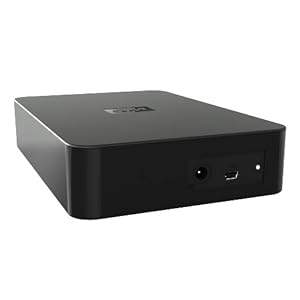If you're renting a 4Wd, the notion of becoming bogged in beach sand can be a exiguous intimidating, especially if you've never driven off-road before. Thankfully, you can avoid most problems by following a few easy tips.
Check the Signs - Are 4Wds Allowed?
Western Hard Drive
Before you take your 4Wd onto any beach, check that 4Wds are permitted to access that single area. Most beaches will be well sign-posted to indicate whether or not you can drive your car on the shore. If signs clearly indicate that 4Wd access is not allowed, don't be tempted to ignore them. The signs are there not just to protect the beach, but also to protect you. In all likelihood, the beach is unsafe for four-wheel driving and you may come to be certainly bogged. On the other hand, if 4Wd access is allowed, you're free to enter; but gait with caution.
Make Sure It's Low Tide
It's not only embarrassing to be caught by incoming water, it is also very dangerous. Your rental car may come to be bogged or even submerged. A good rule of thumb is to only drive on the beach 2 hours before or after Low tide - and only while dayLight hours. Check your car rental deal to read the restricted times you may drive along any beach.
You should allow enough time to voyage and return while the low tide window.
Remember that the beach will turn as the tide changes. That means sometimes the sand will be softer than other times. You will also have a great driving width along the seashore when the tide is low. If you're unsure whether it's safe to drive along a beach, it's a good idea to check with the locals. You can ask the local caravan park manager, a assistance middle point attendant or other local firm operators. And remember, all the time cleave to the conditions in your 4Wd rental agreement!
Reduce Tyre Pressure
Letting air out of the tyres to sell out tyre pressure helps your 4Wd gain great traction on the soft sand. The usual recommended tyre pressure for 4Wd beach driving is 18-20 Psi, but you will find instructions with regard to the correct tyre pressure inside your rental 4Wd vehicle, so be sure to read it properly.
Don't Drive Too Fast... Or Too Slow
If you've never driven through sand before, you'll be surprised to consideration that car steering response is delayed. That's because your tyres are soft and the face is also soft. To prevent accidents, you must not drive too fast, avoiding the need to brake suddenly or swerve too sharply. If you hit a puddle of water, or particularly soft patch of sand, and you're driving too fast, you can certainly lose operate of your steering... And the vehicle. While you must never drive too fast on the beach, you should also avoid driving too slowly. That's because you need momentum to carry the heavy car over the soft sand. If you don't have enough momentum, you are more likely to get bogged.
Take Extra Care
As mentioned earlier, when you sell out the tyre pressure on your rental 4Wd, the performance of the car will change.You should avoid sharp turns and aggressive braking. If you drive recklessly with low-pressure tyres, you risk separating the tyre from the wheel rim. This can damage the car and take hours to fix, no doubt ruining your holiday.
Drive on Hard Sand
You will be less likely to come to be bogged if you drive on the hard sand. The hardest sand is usually closer to the water - between the water's edge and the high-tide mark. Any sand that hasn't been recently covered by water will be powdery, soft and very easy to come to be bogged into. In addition, you should never drive into the water, unless it is specifically signed as an access point.
Do You Need a Permit? Some beaches only allow permit-holders to drive along the beach. The best way to find out whether or not you need a permit is to ask the locals. Of course, if you're a traveler to any country, it is best to find out this information in advance. To avoid disappointment, when you are planning your holiday, naturally call the tourism centre of the local town. You will be able to ask for guidance on which beaches allow 4Wd access and whether you will wish a permit. If a permit is required, remember to ask where you can acquire one.
Always Re-Inflate Your Tyres
When you've ended your 4Wd beach adventure, remember to re-inflate your tyres. Your rental car should be qualified with a pressure gauge and tyre pump so you can get the pressure correct for on-road travel.
4Wd Rental Tips: Beach DrivingSee Also : Buy Shopping Discount Macbook Charger for MC207LL

No comments:
Post a Comment